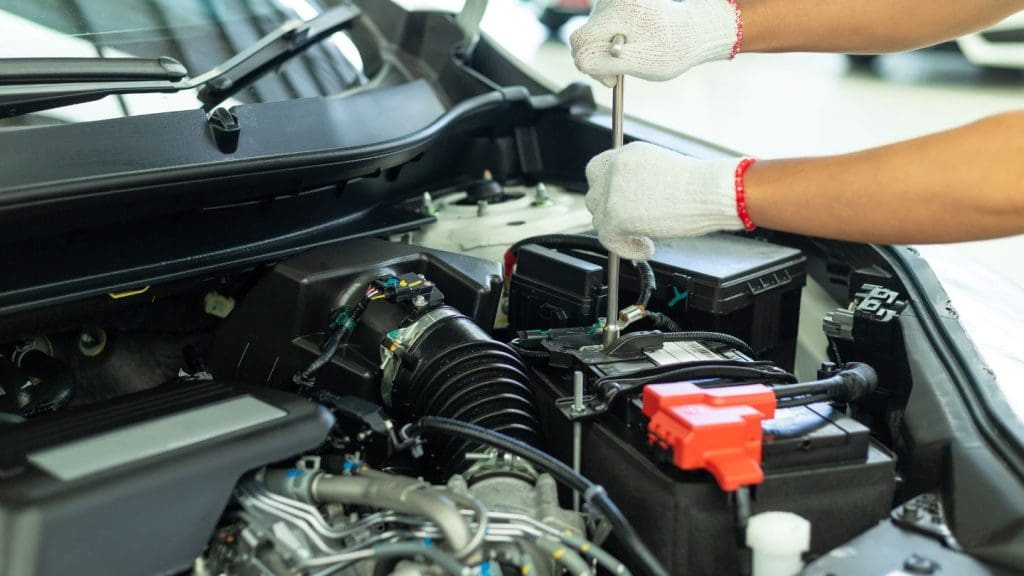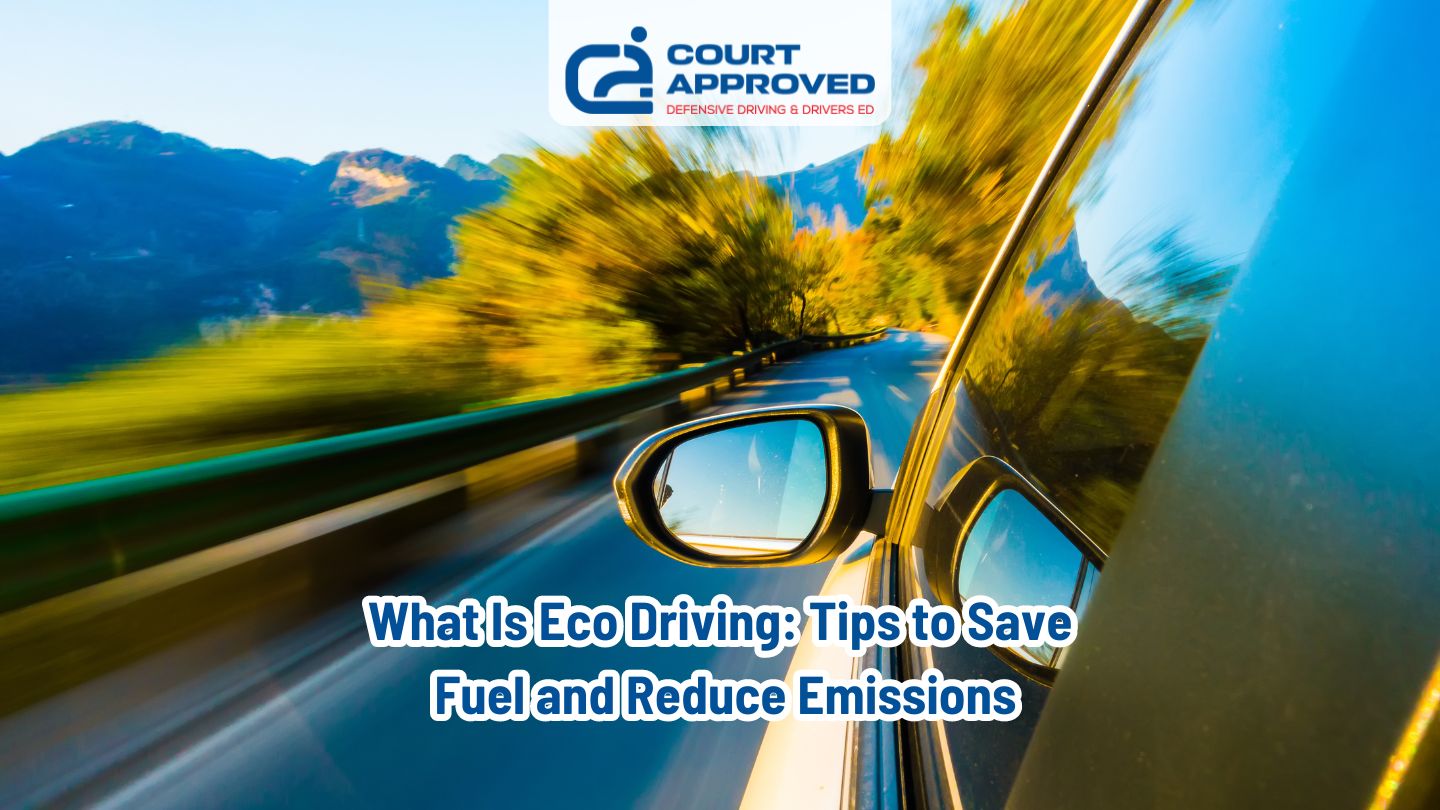Key Takeaways
- Eco-driving techniques lead to improved fuel efficiency and reduced emissions, benefiting both the environment and drivers’ expenses.
- Maintaining a steady speed, smooth acceleration, and anticipating traffic conditions are crucial for maximizing fuel savings and minimizing wear on the vehicle.
- Proper vehicle maintenance and route optimization, along with strategic use of air conditioning, play significant roles in enhancing fuel economy.
Understanding Eco Driving

Practicing eco-driving involves adopting habits that are environmentally friendly while promoting fuel efficiency, thereby reducing emissions and saving money. By adjusting your driving style, you can significantly lower both fuel consumption and greenhouse gas emissions. This means fewer trips to the gas station and a reduced environmental footprint.
Training programs focusing on fuel-efficient driving techniques have become an essential part of driver education. These courses aim to equip drivers with the skills necessary to conserve fuel and optimize their vehicles’ performance. Government policies that set minimum fuel economy standards and mandate fuel-saving methods play a crucial role in promoting these energy-efficient practices among drivers.
Adopting efficient driving principles can lead to substantial fuel savings. For instance, using air conditioning moderately rather than constantly can save more fuel over time. Even small adjustments can greatly enhance overall vehicle efficiency and reduce harmful emissions—all through conscious decision-making centered around economical driving practices.
Pre-Trip Checks
Before embarking on a journey, it’s essential to perform pre-trip checks to ensure your vehicle is in good condition and ready for the road. This not only helps to prevent breakdowns but also contributes to fuel efficiency and eco-friendly driving. Here are some key checks to perform:
- Tire Pressure: Check your tire pressure and make sure it’s at the recommended level. Properly inflated tires can improve fuel efficiency by up to 3% and also increase safety.
- Oil and Fluids: Check your engine oil, transmission fluid, and brake fluid levels. Using the manufacturer’s recommended grade of motor oil can improve fuel economy by 1%–2%.
- Air Filter: Check and replace your air filter if it’s dirty. A clean air filter can improve fuel efficiency and performance.
- Battery: Check your battery terminals and cables for corrosion. A well-maintained battery can help improve fuel efficiency.
By performing these pre-trip checks, you can help ensure a safe and fuel-efficient journey.
Smooth Acceleration and Braking
Adopting gentle acceleration and gradual braking is crucial for fuel-efficient driving. Smoothly reaching a speed of 20 kilometers per hour over five seconds from a stop can significantly reduce fuel consumption and decrease wear on your vehicle’s engine and brakes.
Fuel efficiency can improve by up to 30% on highways when drivers avoid aggressive behaviors like rapid acceleration and sudden, harsh braking. Maintaining consistent speeds without abrupt changes helps conserve fuel. Technologies that provide real-time feedback enable drivers to adjust their habits according to current traffic conditions, encouraging smoother handling that enhances fuel conservation.
Besides economizing on fuel, this driving style offers additional benefits, such as increased passenger comfort and reduced strain on the vehicle’s mechanical parts. By integrating these efficient driving practices, you not only promote better energy use but also ensure greater durability and performance for your vehicle.
Maintaining a Steady Speed
Maintaining a steady speed can lead to significant fuel savings. Speed fluctuations tend to increase fuel consumption, so smooth and consistent driving is key. Utilizing cruise control is especially beneficial on highways, as it aids in achieving better fuel efficiency.
For optimal fuel economy, it is best to drive within a moderate speed range of 50 to 80 kilometers per hour. Fuel consumption rises sharply once speeds exceed 100 kilometers per hour due to increased air resistance. For example, every additional 10 kilometers per hour over this threshold can result in approximately 20% more fuel being consumed. Adhering to these speed guidelines greatly enhances the likelihood of achieving superior fuel economy and maximizing energy conservation.
To conserve fuel, allowing your vehicle to coast instead of applying the brakes helps preserve kinetic energy and reduce unnecessary power use. Anticipating changes in traffic flow and striving for a uniform travel pace will minimize repetitive cycles of acceleration followed by braking. These practices not only maintain efficient combustion but also help reduce overall vehicular emissions.
Read More: How Defensive Driving Can Help You Contest a Speeding Ticket in Texas
Anticipating Traffic Conditions
Anticipating traffic conditions is crucial for maintaining a consistent speed and minimizing fuel consumption. By keeping a safe distance from the vehicle ahead, you can avoid sudden stops and starts, resulting in smoother driving patterns that boost fuel efficiency. Observing the behavior of pedestrians and other vehicles helps drivers predict changes in traffic flow and adjust their actions accordingly.
Timing your approach to traffic lights is also essential for conserving fuel. Gradually slowing down as you approach red lights, rather than accelerating, reduces fuel use by limiting the need for hard braking followed by rapid acceleration—both of which significantly increase fuel consumption.
By proactively observing road conditions, drivers can save substantial amounts of fuel while optimizing their vehicle’s performance. It comes down to being aware of your surroundings and making strategic decisions that ensure smooth and economical driving.
Optimal Engine Speed
Vehicles typically achieve optimal fuel efficiency when driven at speeds ranging from 50 to 80 kilometers per hour. Keeping the engine speed within this range is essential, as higher speeds lead to increased fuel consumption. Conversely, driving at excessively low engine speeds can cause the car to judder, making for an uncomfortable and inefficient driving experience.
To enhance fuel economy, drivers should aim to shift gears promptly. Timely gear changes ensure that the engine operates at lower revolutions per minute (RPM), which helps conserve fuel by keeping RPMs down. By adhering to these optimal speed guidelines and making effective gear adjustments, drivers can significantly improve their vehicle’s overall fuel efficiency.
Striking the right balance between maintaining your car’s performance and ensuring smooth operation involves hitting that ideal point where your vehicle is not only running efficiently but also using less fuel. This balance boosts energy conservation levels while minimizing unnecessary fuel consumption.
Proper Vehicle Maintenance

Ensuring your vehicle is well-maintained, including keeping tires properly inflated, is a critical factor in boosting fuel efficiency and cutting down emissions. Promptly addressing maintenance issues can improve fuel economy significantly, while correcting major defects such as a faulty oxygen sensor can greatly enhance gas mileage. This underlines the necessity of consistent vehicle check-ups and immediate repair work.
Maintaining tires at the proper pressure contributes considerably to saving on fuel. Regular tire pressure checks are essential for driving that’s both safe and efficient with regard to fuel consumption. Utilizing the motor oil recommended by your car manufacturer plays a vital role in optimizing performance—potentially improving gas mileage.
Replacing clogged air filters may lead to better acceleration and enhanced miles-per-gallon figures, especially in older vehicles equipped with carbureted engines. Proper ongoing care for one’s automobile extends beyond the mere improvement of its efficiency—it also delivers more dependable safety features along with overall smoother drivability.
Smart Use of Air Conditioning
Utilizing air conditioning at elevated speeds can lead to improved fuel efficiency by maintaining superior aerodynamics compared to the alternative of having windows down. Employing air conditioning judiciously enhances not only comfort but also contributes to a better fuel economy. Conversely, when traveling at reduced speeds, opting for open windows as a means of cooling your vehicle may be more advantageous than using the air conditioner.
By adjusting the usage between air conditioning and rolling down windows contingent on your driving speed, you’re able to preserve fuel and consequently save money. Small alterations in how you manage these features can aggregate into substantial enhancements in your vehicle’s overall ability to conserve fuel.
Route Optimization
Strategically planning routes to avoid areas with heavy traffic can greatly reduce idle times, thereby enhancing fuel efficiency. By optimizing travel paths for better fuel economy, drivers can decrease the total miles traveled, minimize stops at traffic signals, and reduce time spent in congestion. Organizing trips to accomplish multiple tasks in one outing helps avoid delays caused by busy roads and ensures that the vehicle’s engine operates at its most efficient temperature range.
Drivers benefit from dynamic routing as it allows them to adapt their path based on immediate needs, thus improving both flexibility and overall operational efficiency. Real-time adjustments made possible through dynamic routing take into account any new requirements received during the day’s journey. Fleet management technology plays a crucial role here, streamlining route optimization using algorithms that consider priorities alongside current road statuses.
Implementing eco-driving strategies such as well-planned routes and maintaining appropriate distances between vehicles not only mitigates driver fatigue but also lowers stress levels behind the wheel. Route optimization is pivotal for conserving fuel while reducing emissions, leading to a more fluid driving experience for both fleet operators and individual drivers.
Combining Multiple Trips
By combining multiple errands into one trip, you can boost fuel efficiency because a warm engine runs more efficiently than a cold one. Planning your trips this way can lead to a substantial decrease in fuel consumption.
Making several short trips starting with a cold engine can use up to twice as much fuel as taking a single longer trip that covers the same distance. Strategic trip planning helps limit driving when the engine is still cooling down, potentially reducing overall travel distances.
Making a Change
Making a change to eco-friendly driving habits can have a significant impact on the environment and your wallet. Here are some tips to help you make a change:
- Start Small: Begin by making small changes to your driving habits, such as accelerating smoothly and maintaining a constant speed.
- Use Cruise Control: Use cruise control on highways to maintain a constant speed and improve fuel efficiency.
- Avoid Idling: Avoid idling for extended periods, as it wastes fuel and pollutes the air.
- Driver Training: Consider taking a driver training course to learn more about eco-friendly driving techniques and how to improve your fuel efficiency.
- Track Your Progress: Keep track of your fuel consumption and monitor your progress. This will help you stay motivated to continue making changes to your driving habits.
By making these changes, you can contribute to a more sustainable future and save money on fuel costs. Remember, every small change counts, and making a change to eco-friendly driving habits is a great place to start.
Benefits of Eco Driving Courses

Fleet managers frequently implement driver training programs that promote eco-driving, encouraging the adoption of practices that enhance fuel efficiency and reduce emissions. These eco-driving courses are designed to optimize fuel economy while simultaneously improving drivers’ performance on the road. Programs aimed at managing driver risk support driving techniques that prioritize safety and favor environmentally friendly habits. These methods lead to a more comfortable experience for both drivers and passengers by advocating smoother operation of vehicle controls. Incentives and educational initiatives, such as online defensive driving courses, can be established by fleet managers to motivate drivers within their fleet to embrace these efficient driving behaviors.
Summary
To summarize, practicing eco-driving is a potent strategy for conserving fuel, diminishing emissions, and refining your driving experience. Embracing gentle acceleration and deceleration techniques, aiming to drive at constant speeds, foreseeing the flow of traffic ahead, and ensuring your vehicle remains in top condition can all help enhance the efficiency with which you use fuel. Minimizing extra load in your car, along with judicious use of air conditioning and route optimization, can also aid in reducing fuel consumption.
At Court Approved Defensive Driving, we’re committed to helping you become a better, more efficient driver. Our defensive driving class in Texas is designed to sharpen your driving skills, promote road safety, and even help you avoid minor traffic violations. Whether you’re looking to improve your driving skills or fulfill court requirements, we offer defensive driving courses in Plano, Lubbock, Fort Worth, Houston, El Paso, Abilene, and Arlington to support you in becoming a more responsible By improving your driving habits, you not only contribute to a cleaner environment but also maintain a spotless driving record. Explore our programs today to drive smarter and more responsibly. Contact us to learn more and get started!



